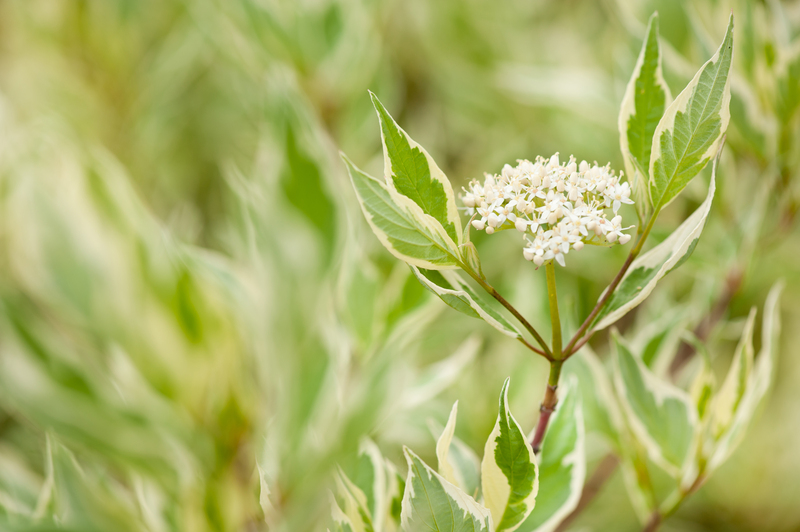Ensuring your orchids blossom beautifully
Posted on 18/08/2025
Ensuring Your Orchids Blossom Beautifully: The Ultimate Guide
Orchids are among the most captivating and elegant flowers you can grow at home. Their diverse, striking blooms bring color and sophisticated charm to any space. However, achieving vibrant, long-lasting orchids in bloom is a delicate art that requires informed care and some patience. In this ultimate guide, you will discover practical, SEO-friendly tips for ensuring your orchids blossom beautifully time after time.

Understanding Orchids: A Fascinating Flower Family
Before you embark on the path to beautiful orchid blossoms, it is vital to understand what makes orchids unique. The orchid family (Orchidaceae) is one of the largest plant families, boasting over 25,000 species and countless hybrids. Phalaenopsis (moth orchids), dendrobiums, cattleyas, and oncidiums are some of the most popular orchid varieties for home growers.
- Epiphytic orchids: These species grow on trees in their natural habitat, not in soil.
- Terrestrial orchids: Found on the ground, these are less common in home collections.
With their distinct lifestyles, orchids need specific orchid care tips and orchid blossom techniques to truly thrive and reveal their full beauty.
Key Factors for Beautiful Orchid Blossoms
To ensure your orchids blossom beautifully, you need to provide the right environment and care. Here are the essential elements that can make or break your orchid blooming experience:
1. Perfect Lighting for Profuse Orchid Blooms
Lighting is one of the most critical factors affecting the health and blossoming of orchids. Insufficient or excessive light can prevent your orchids from blooming or even damage them.
- Bright, Indirect Light: Most orchids--especially Phalaenopsis--prefer a location with filtered light. Avoid direct sunlight which can scorch the leaves.
- East or West Windows: These are ideal for indoor orchids as they provide soft morning or afternoon light.
- Artificial Lights: If natural light is limited, grow lights designed for plants can promote blooming. Ensure they're on for 12-14 hours daily.
- Leaf Color Clues: Healthy orchids have light green leaves. Dark green might indicate not enough light; reddish tones suggest too much.
Pro Tip: Rotate your orchid regularly for even light exposure and symmetrical growth!
2. Humidity and Air Circulation: The Secrets to Stunning Blooms
Orchids hail from humid, breezy environments. Mimicking these conditions increases the chances your orchids will produce blossoms.
- Maintain 50-70% Humidity: Use a humidifier, group plants together, or place the orchid pot on a water-filled pebble tray to boost air moisture.
- Good Air Circulation: Gentle air movement prevents disease and strengthens plants. Use a fan on a low setting, but avoid cold drafts.
- Regular Misting: Lightly misting leaves can help during dry spells, but avoid soaking the orchid crown to prevent rot.
3. Watering Your Orchid: The Right Technique for Beautiful Blooms
Orchids are sensitive to over-watering and under-watering. Their unique growing medium and root systems require a specific approach:
- Water Thoroughly, But Infrequently: Soak the potting mix completely, then let it drain and dry out slightly before watering again.
- Check the Roots: Silvery-white roots mean the plant is ready for water; bright green roots are hydrated.
- Never Let Roots Sit in Water: Use pots with drainage holes to avoid root rot.
- Morning Watering: Watering in the morning allows leaves to dry and decreases disease risk.
Remember: Different orchid varieties may have slightly different needs--always check species recommendations!
4. Potting and Repotting: Foundation for Future Blooms
Healthy roots are the foundation of orchid flowering success. Over time, old potting mix decomposes, suffocating roots and inviting disease.
- Repotting Frequency: Every 1-2 years, or if the potting medium breaks down, repot your orchid.
- Choose the Right Medium: Use specially formulated orchid bark, sphagnum moss, or a blend. Avoid regular potting soil.
- Pot Size: Orchids love snug pots--avoid over-potting, which can lead to excess moisture and weak flowering.
5. Feeding Orchids for Profuse Flowering
Fertilizing orchids is essential for encouraging beautiful blossoms.
- Orchid-Specific Fertilizer: Use a balanced fertilizer (20-20-20) or one tailored for orchids.
- "Weakly, Weekly": Feed your orchids a quarter-strength dose every week when they're actively growing and less when dormant.
- Flush with Water: Once a month, rinse the potting mix with clear water to avoid a build-up of salts that can damage roots.
Bonus Tip: Switch to a "bloom booster" formula before and during the flowering phase to stimulate blossoms.
Pest and Disease Defense: Keeping Orchids Healthy for Optimal Blossoms
Healthy plants are more likely to bloom. Protecting orchids from pests and diseases ensures you enjoy their full beauty.
- Inspect Regularly: Check leaves, roots, and blooms for signs of mealybugs, aphids, or scale insects.
- Treat Promptly: Remove pests by hand or use an insecticidal soap.
- Prevent Fungal Issues: Avoid letting water sit in the leaf axils or flowers. Good ventilation is crucial.
Orchid Blossom Guarantee: Consistent health care means more resilience and better blooming cycles.
Encouraging Dormant Orchids to Rebloom
Not all orchids bloom year-round. Many enter a resting or dormant phase after their initial show. Knowing how to bring them back into bloom is vital for ensuring your orchids blossom beautifully season after season.
Understanding the Orchid Bloom Cycle
- Blooming Phase: Lasts 2-6 months depending on the variety.
- Resting Phase: Orchid may look "sleepy"--few new leaves or blooms but remains alive.
How to Encourage Reblooming:
- Temperature Dip: Many orchids (especially Phalaenopsis) need a drop in nighttime temperatures by 10-15?F for a couple of weeks to "trigger" the formation of flower spikes.
- Light Adjustments: Ensure maximum light--without direct sunburn--to jumpstart the plant's cycle.
- Hold Back on Watering: Slightly reduce watering during the resting period, then resume when growth appears.
Patience is essential. Orchids will not bloom on command, but by replicating natural cues, you greatly enhance your odds for a spectacular display of orchid flowers.
Pruning and Staking: Shaping for Floral Success
Clever pruning and staking aren't just about looks--they maximize your plant's ability to produce more abundant and longer-lasting blooms.
- After Blooms Fade: For Phalaenopsis, trim the flower spike to just above the node below the first flower; it may produce a side branch and fresh blooms.
- Remove Old or Dead Material: This keeps energy focused on healthy growth and new flowers.
- Stake Wisely: Use orchid stakes to gently support flower spikes, keeping heavy blooms upright and elegant.
Special Tips for Maximizing Orchid Flower Buds
If you want to ensure abundant orchid blossoms, pay attention to these advanced tips:
- Quality Water: Use distilled, rain, or filtered water if your tap water has high mineral content.
- Monitor for Nutrient Deficiencies: Pale or spotted leaves hint at a need for fertilizer adjustments.
- Right Season: Most orchids naturally bloom in winter or spring. Don't panic if buds don't appear out of season.
- Avoid Disturbance: Once a flower spike forms, don't move your orchid excessively, as buds might drop due to stress.
Orchid Myths Debunked: What Not To Do
Let's bust some common myths about orchid blossoms and care:
- Myth 1: "Orchids are impossible to grow." Truth: With the right care, they're just as rewarding as any houseplant.
- Myth 2: "Orchids should be potted in soil." Truth: Most thrive in bark or moss, not traditional soil.
- Myth 3: "Fertilizer burns orchids." Truth: Properly diluted fertilizer is beneficial for flowering.
- Myth 4: "More water means more blooms." Truth: Overwatering leads to rot and fewer flowers.
Recommended Orchid Varieties for Spectacular Blooms
Some orchids deliver notably beautiful, reliable blossoms for home growers. Consider these user-friendly species:
- Phalaenopsis: Long-lasting, butterfly-like flowers; ideal for beginners.
- Dendrobium: Varied shapes and colors with prolific flowering habits.
- Cattleya: Large, fragrant, and richly colored blooms.
- Oncidium: Known as "dancing lady" orchids for their cute, elaborate flowers.
- Paphiopedilum (Lady Slipper Orchids): Unique pouches and attractive patterns; tolerant of lower light.

Summary: Your Roadmap to Beautiful Orchid Blooms
To ensure your orchids blossom beautifully:
- Provide bright, indirect light.
- Maintain high humidity and good air circulation.
- Water properly--let roots dry slightly between waterings.
- Use the right potting mix and repot when needed.
- Fertilize regularly but gently.
- Monitor for pests and diseases.
- Encourage dormancy and reblooming with temperature cues.
Combining these strategies dramatically increases your chances of enjoying cascading, colorful orchid flowers year after year.
Conclusion: The Joy of Beautifully Blossoming Orchids
Orchids reward attentive growers with stunning blossoms and unmatched elegance. By mastering the essentials of light, humidity, water, and nutrition, you lay the groundwork for fabulous orchid flowers in your own home.
With patience and the right approach, you can transform your orchids into a stunning, ever-blooming centerpiece. Follow this comprehensive care guide and you'll soon be the proud owner of gloriously beautiful, healthy, and flowering orchids. Happy growing!

